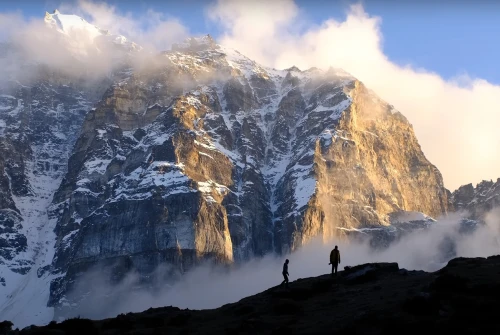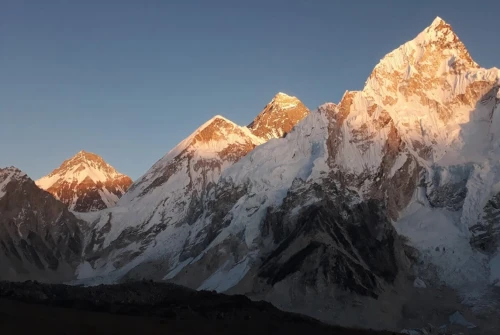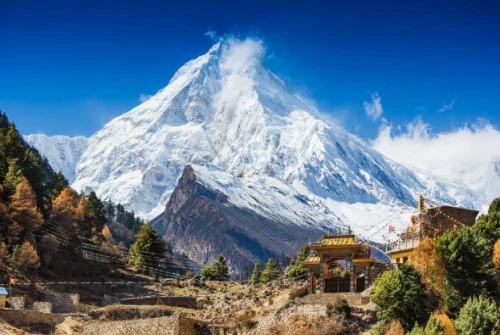If you’re preparing for a trekking adventure in Nepal, packing the right equipment is essential for a successful and enjoyable journey. Trekking in Nepal, whether you're heading to Everest Base Camp, Annapurna Circuit, or Langtang Valley, requires thoughtful packing to ensure you’re ready for both unpredictable weather and rugged terrain. You want to make sure your bag is light and organized, as carrying unnecessary items will only add extra weight and make your trek more challenging.
Here’s the ultimate guide to essential trekking gear to pack for your trip to Nepal
General Equipment
70-Liter Duffel Bag – A large duffel bag to carry all your gear. You’ll need this for your trekking clothing, sleeping bag, and extra supplies.
5-Liter Daypack – A small backpack for personal belongings, water, snacks, and other small items that you'll need on a daily basis during the trek.
Headlamp or Torch with Extra Batteries – Essential for early morning starts or trekking in the dark. Ensure you bring spare batteries to avoid any inconvenience.
UV Protective Sunglasses – Nepal's high-altitude sun can be intense, so make sure to carry sunglasses that protect against UV rays.
First Aid Kit – A well-stocked kit should include painkillers, antiseptic wipes, band-aids, and any prescribed medication you need.
Blister Treatment Kit – Blisters are common during treks, so bring along some moleskin or blister plasters to avoid painful feet.
Duct Tape and Band-Aids – For quick fixes, such as repairing gear or treating minor injuries.
Sleeping Bag – Depending on the season, you might need a good sleeping bag rated for colder temperatures. Make sure it's lightweight and packs down easily.
Water Purification Tablets – Essential for ensuring your drinking water is safe, especially on long treks.
Trekking Poles – These help distribute weight, reduce pressure on your knees, and improve balance on uneven terrain.
For Your Head:
Warm Woolen Hat or Synthetic Cap – To keep your head and ears warm in the chilly mountain air.
Scarf or Bandana – Protect your neck and face from the sun or cold winds.
Cap or Sun Hat – Keep the sun out of your eyes during daytime trekking.
For Your Upper Body:
2 Long-Sleeve Shirts and 1 Short-Sleeve Shirt – Choose lightweight, moisture-wicking material to keep you dry and comfortable.
Polypropylene Light Thermal Tops – Perfect for layering and warmth without excessive weight.
Water-Resistant Jacket – A jacket that can keep you dry during rain or snow is a must.
Windproof Pullover Jacket – Necessary for keeping the wind chill at bay on higher altitudes.
Down Jacket (if trekking in winter, fall, or spring) – A lightweight but warm jacket for those colder evenings and higher altitudes.
For Your Hands:
For Your Lower Body:
Trekking Shorts – Light and breathable shorts for warmer days, typically worn during midday trekking.
Hiking Pants – Durable pants that offer comfort for long treks. Consider zip-off pants that can convert into shorts.
Underwear – Quick-drying and moisture-wicking underwear is ideal for trekking.
For Your Feet:
Water-Resistant Hiking Boots – A pair of sturdy boots with good ankle support is crucial. They should be durable, comfortable, and waterproof for the varied terrain.
Sandals – For relaxing in the evenings or around camp.
Woolen, Lightweight Socks – Bring both thick and thin socks. The thicker ones provide extra warmth at higher altitudes.
Knee Supports – These are optional but may be helpful for the downhill sections of the trek.
Personal Preferences:
Sunscreen – The sun can be harsh at high altitudes, so pack a good sunscreen with high SPF.
Chapstick or Lip Balm – Protect your lips from becoming cracked or dry due to the cold, dry air.
Portable Shower Unit – If you’re planning to camp or trek in remote areas, this can be a great addition.
Wet Wipes & Toilet Paper – These are important for personal hygiene, especially in remote areas where facilities may be limited.
Hand Sanitizer – A must-have to keep your hands clean while trekking in Nepal.
Matches or Lighter – Always useful in case of emergency.
Water Containers – A refillable water bottle or hydration pack to stay hydrated during your trek.
Security Knife – A small, multi-purpose knife can be useful for many situations during your trek.
Rain Gear – An umbrella, raincoat, or poncho is essential if you're trekking during the rainy season (June to September).
Multi-Socket Adapter – To charge your devices when electricity is available at guesthouses along the trek.
Additional Tips for Packing:
Dress in Layers: During the day, trekking in Nepal can be warm, especially at lower altitudes. As you gain elevation, temperatures drop, and the evenings can be quite cold. It’s best to wear layers so you can adjust according to the temperature.
Don’t Overpack: It’s tempting to bring everything you might need, but remember, you’ll be carrying your gear for days. Pack only the essentials to keep your load light.
Invest in Quality Gear: While trekking gear can be expensive, investing in quality, lightweight equipment will make your trek more enjoyable and comfortable. Don’t skimp on essentials like your boots, sleeping bag, and jacket.
Conclusion:
By packing the right gear for your trek in Nepal, you'll be prepared for the challenges of the terrain and the weather, ensuring that your adventure is as comfortable and enjoyable as possible. The key is to keep your pack light while still having everything you need for safety and comfort.
Need help with your packing list or have more questions about trekking gear? Feel free to contact us at [email protected] for personalized recommendations and tips for your Nepal trekking adventure.
An engineering graduate from Tribhuvan University who was passionate about trekking, climbing, and mountain tourism began his adventure trip in the Himalayas when he was still a teenager. At last, he finds a way to make his interests and pastimes pay the bills. Shankar was very impressed by the snow-capped mountains, trekking, and climbing in the Himalayas because he grew up surrounded by the Ganesh Himal and Manaslu regions.




